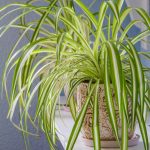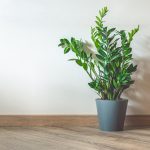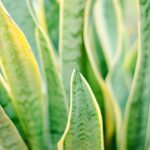As the name suggests, cast iron plant care is minimal. This is a truly hardy, evergreen plant that is nearly indestructible. It will grow equally well in bright, indirect light or in low light conditions, just be sure to keep it out of direct sunlight or the leaves will get burnt. The leaves are quite elongated and in addition to the dark green leaf, variegated cast iron plants can have either spotty or striped leaves. You don’t have to have a green thumb to keep this plant alive!
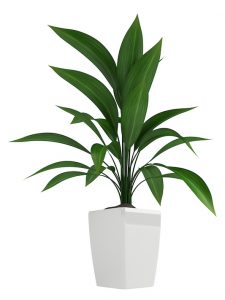
 |
 |
 |
 |
| Light | Water | Ease of Growing | Growth Rate |
| Low light to bright filtered light. Avoid direct sunlight. | Allow soil surface to dry out between watering. | Very easy, great for beginners. | Slower growing but long living. |
Aspidistra plants are characterised by elongated, glossy green leaves. The plant has an upright growth form with the leaves reaching to 3′ (1m). It will keep its shape quite well and the width of it can be maintained when it requires repotting. More on this below.
The cast iron plant makes a lovely statement plant on its own or is suited to grouping with other house plants for added variety. Arranging different leaf shapes, colors and sizes can create an interesting indoor garden.
The different varieties of Aspidistra provide some lovely leaf options although they may be difficult to find. ‘Milky way’ has white speckled leaves, ‘Starry night’ has yellow speckles and ‘Variegata’ has a creamy stripe down the leaf. The cast iron plant care is similar for all the varieties although the colored leaf varieties are not quite as hardy as the original Aspidistra elatior.
The cast iron plant rarely produces flowers and they can be easily missed because they grow at soil level. Plants will flower best if they are provided with bright, indirect light, but they are not grown for their flowers.

Cast Iron Plant Care Guide
Light
The main thing with cast iron plants is to avoid direct sunlight. Other than that any light level is OK. They will happily grow in bright, indirect light or where the light is more dim. Not in a room with no windows though as all plants do require some light.
Variegated cast iron plants will be better in brighter light as this will help to maintain the color on their leaves.
Water
Cast iron plant care is relatively simple. These plants are not extremely thirsty. They do need water but they will thrive on neglect and irregular watering. In fact, when it comes to water, less is more with cast iron plants. And in winter, water them sparingly.
If you feel the top inch of the soil and it feels dry, give it a drink. If it is still moist, leave it a bit longer before watering. Cast iron plants don’t like soggy soil, it’s better to keep them on the drier side. Once a month, the whole pot can sit in a tub of water to give them a good soaking. And just keep them slightly damp in between this.
Temperature
As a truly hardy plant, the cast iron plant can survive in warm or cool temperatures. It won’t however, endure the scorching heat of being placed near a fireplace! If you would be comfortable, it will be comfortable too.
Humidity
Again, not a particularly fussy plant here. Aspidistra will grow in high to low humidity ranges.
Fertilizer
Because the cast iron plant is not one of the fastest growing plants, its need for regular feeding is minimal. Providing it with a liquid house plant fertilizer every couple of months at the start of spring and through summer will see the new leaves grow healthy and full.
Pruning
If any leaves do become scorched or damaged they can be removed at the base near the soil or individual leaves can be trimmed to remove any damage.
Cast Iron Plant Care Planting Guide
Soil
When potting up your cast iron plant, a general purpose, well-drained soil is all that is required.
Repotting
When repotting your cast iron plant use a reasonably large sized pot so it has room to grow. Tease the roots out a little and remove any tangled roots. They may take a couple of weeks to settle into their new pot so treat them carefully during this time.
Cast iron plants do not like to be repotted too frequently, it will harm them. Once every 3 – 4 years will be often enough to keep them healthy.
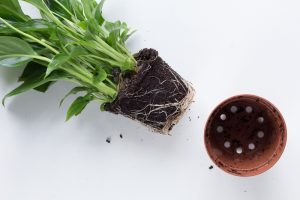
Propagation
For your cast iron plant, care is required when propagating. When the time comes, the plant can be divided into separate clumps. Ensure each clump has sufficient leaves to allow it to grow again. This will help maintain the size of the plant for the position you have placed it in your home.
Common Problems With Cast Iron Plant Care
Cast iron plants can be susceptible to spider mites in the cooler months. If you notice any webbing between the leaves and stems check the underside of the leaves. Treat them as soon as they appear with systemic insecticide. Repeated treatment may be necessary.
Underwatering can cause brown leaf tips, which is easily corrected with more regular watering. Split or damaged leaves could indicate too much fertilizer has been applied. Slowly pouring water on the soil and allowing it to drain through a couple of times will help with this. If there are brown scorch marks on the leaves this could indicate too much direct sunlight.
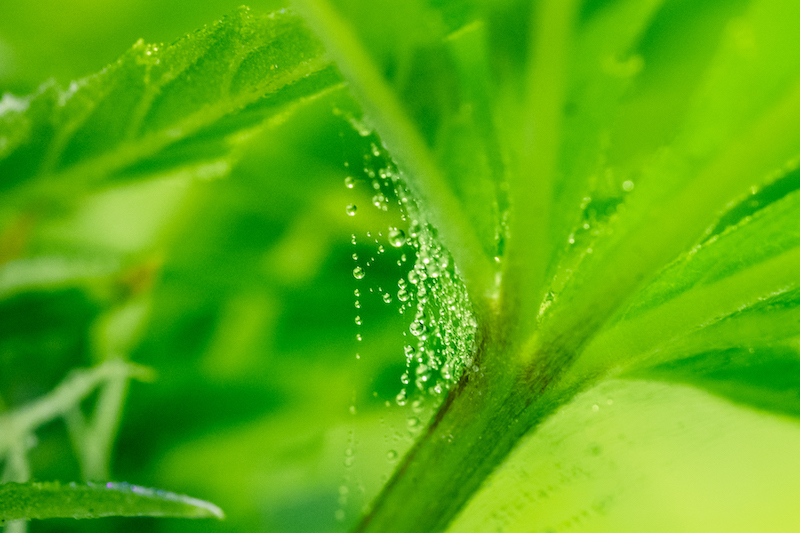
Toxicity
Non-toxic to pets and people.
Summary Of Cast Iron Plant Care
Do’s:
- wipe the leaves to keep them dust free
- avoid direct sunlight
- water infrequently
Don’t:
- repot it too frequently
- saturate the soil
Interesting Facts
- The large leaves are great dust collectors which can help allergy sufferers.
One of the hardiest house plants available you are sure to find a spot for an elegant Aspidistra in your home. The glossy green leaves are lush and beautiful and although it’s not one of the fastest growing house plants, it will bring you joy for many years. If you are new to indoor gardening you should find the cast iron plant care quite manageable and in no time your Aspidistra will be thriving.


